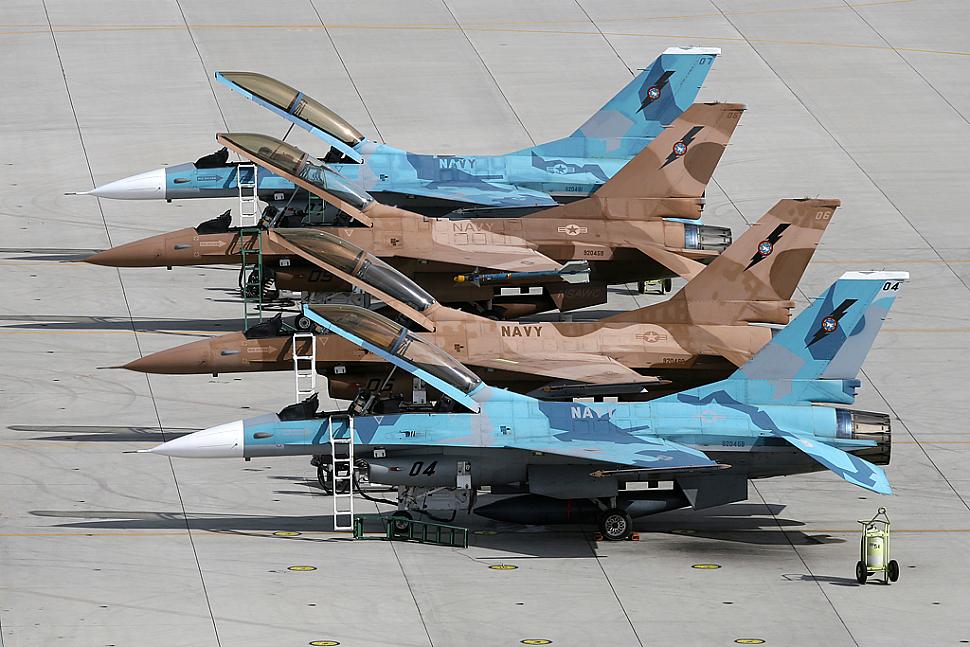F-16 Reference
Site missing

|
F-16 Fleet ReportsF-16 aircraft version production |
Data
The graph shows the total number of F-16s for each major version. It includes original production aircraft (as built - e.g. block 10, block 15), and aircraft models converted from older models (e.g. block 15 ADF, block 20 MLU).
Disclaimer: This report is generated in real-time from our F-16 Aircraft Database. We strive to keep our database up-to-date and complete, nevertheless for some countries data is hard to verify (e.g. accuracy for the Middle East is only 90%). Please contact us if you have any questions or feedback.
- Horizontal Axis: The different major F-16 versions
- Vertical Axis: Total number of aircraft delivered for each version
- Series: The first series ("delivered from plant") are new-built models. The second series ("on order") shows the number of aircraft ordered but not yet delivered. The third series ("converted") includes aircraft models that were converted from older models (and as such are not new-built airframes)
Click on the color labels to disable/enable series; click on the zoom icons to zoom in (+) or out (-). Click on the full screen icon to display the graph full screen.
Analysis Block 15 is the most common F-16 version, embodying the originial design philosophy of the F-16 as a light-weight dogfighter. A prime example are these US Navy aggressors, still used as opposing "Red air" forces at NAS Fallon. Many A/B models have been converted into either block 15 ADF (Air Defense Fighter) or block 20 MLU (Mid-Life update). The ADF was a variant specifically designed to replace the fighters in USAF's interception/air defense squadrons and was the first F-16 variant to support the AIM-7 Sparrow. The block 20 MLU conversion's main purpose was to extend the service life of the EPAF nations' block 15 fleets by introducing many advanced C/D features into the A/B versions, such as upgraded radar, introduction of the AIM-120 AMRAAM, glass-cockpit, expanded Modular Mission Computer, etc. A total of 259 aircraft (of an intended 271) were converted to ADF with USAF as only customer, while 387 aircraft were converted to MLU (February 2010), key customers being Belgium, Denmark, the Netherlands, Norway, Portugal and Jordan. A small number of block 20 was also new-built for Taiwan. Second, third, and fourth places are taken by the block 50/52, block 40/42 and block 30/32. As a whole, far more C/D versions where built than A/B versions. The C/D brings numerous advantages: block 30/32 introduced the GE F110-100 engine, block 40/42 improved ground attack capabilities greatly with the LANTIRN suite and block 50/52 included support for the AGM-88 missile and thus SEAD capability. All aircraft currently on order are block 50/52 variants. The block 60, an advanced variant built for the UAEAF has so far not seen any takers besides the United Arab Emirateb, although variants of the block 60 have been offered to India amongst others. Two types of engines were used for the C/D models: the PW F100-200E/229 (which equips block 32/42/52 models), and the GE F110-100/129 (block 30/40/50). The main reason for this is that the USAF wanted to use a dual-sourcing strategy for engines. The split is about 2 to 1 in favour of the General Electric engine, with over 1,550 aircraft fitted with it and about 800 with the Pratt & Whitney engine. |
|
Visitor Comments
Note: Errors and omissions in the above text can be added here. Please note: your comments will be displayed immediately on this page.
If you wish to send a private comment to the webmasters, please use the Contact Us link.
